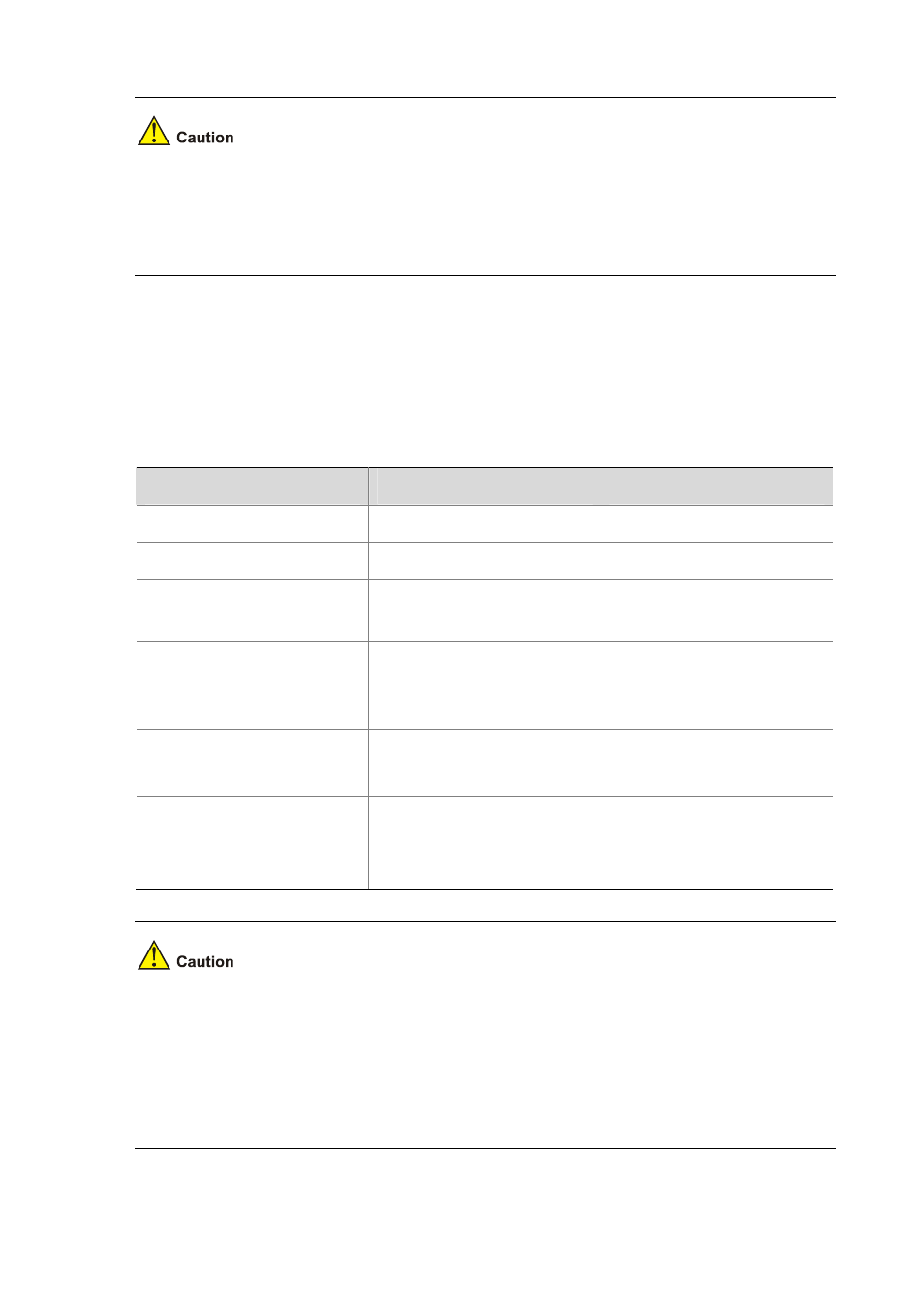Configuring an mbgp route reflector – H3C Technologies H3C S7500E Series Switches User Manual
Page 251

8-17
z
When configuring MBGP community, you need to reference a route policy to define the specific
community attributes, and apply the route policy for route advertisement.
z
For route policy configuration, refer to Route Policy Configuration in the Layer 3 - IP Routing
Configuration Guide.
Configuring an MBGP Route Reflector
To guarantee the connectivity between multicast iBGP peers in an AS, you need to make them fully
meshed. But this becomes unpractical when there are large numbers of multicast iBGP peers.
Configuring route reflectors can solve this problem.
Follow these steps to configure an MBGP route reflector:
To do…
Use the command…
Remarks
Enter system view
system-view
—
Enter BGP view
bgp as-number
—
Enter IPv4 MBGP address family
view
ipv4-family multicast
—
Configure the router as a route
reflector and specify an MBGP
peer/peer group as its client
peer { group-name |
peer-address } reflect-client
Required
Not configured by default.
Enable route reflection between
clients
reflect between-clients
Optional
Enabled by default.
Configure the cluster ID of the
route reflector
reflector cluster-id cluster-id
Optional
By default, a route reflector uses
its router ID as the cluster ID.
z
In general, it is not required that clients of a route reflector be fully meshed. The route reflector
forwards routing information between clients. If clients are fully meshed, you can disable route
reflection between clients to reduce routing costs.
z
In general, a cluster has only one route reflector, and the router ID of the route reflector is used to
identify the cluster. You can configure multiple route reflectors to improve network stability. In this
case, you need to specify the same cluster ID for these route reflectors to avoid routing loops.
